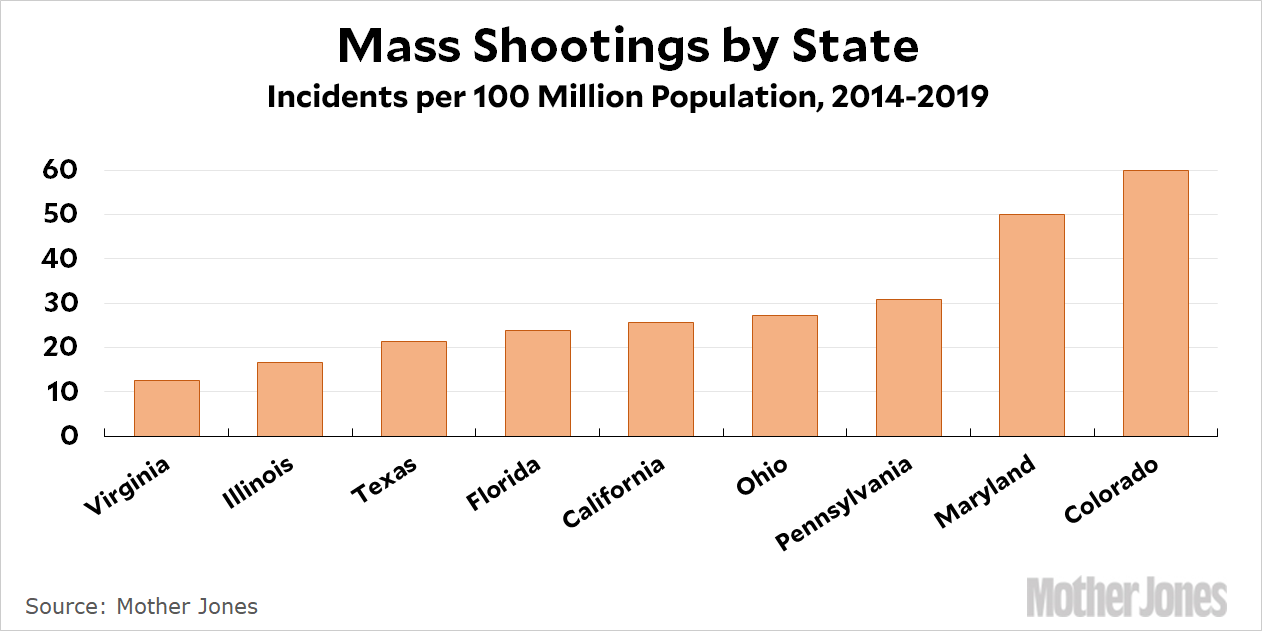A few days ago David Harsanyi wrote a piece for National Review saying that since none of California’s gun laws stopped the recent Santa Clarita shooting, there was hardly any point in Democrats pushing for similar laws at a national level. “The reaction of [Sen. Chris Murphy] and others reminds us of two things,” he wrote. “1) Stricter gun laws don’t stop mass shootings. 2) There will never be enough laws to satisfy Democrats.”
I responded that, by definition, whenever any crime happens—murder, robbery, rape, carjacking, whatever—you can say that current laws didn’t stop it. What’s more, although California’s laws are fairly substantial by US standards, they’re fairly feeble by any other standard. This is because of both Republican opposition and Supreme Court rulings. Harsanyi responded yesterday, but I didn’t quite understand his point:
“[M]urder, robbery, rape, carjacking” are criminal acts. A gun is a tool, not an act, and owning one is a right. If laws passed to alleviate “murder, robbery, rape, carjacking” limited the liberties of victims but empowered criminals, we’d be paying attention.
Then Charles Cooke jumped in, saying that Democrats routinely overstate how effective their proposed gun laws would be:
The trouble with this line of argument is that it bears no relation whatsoever to how Democrats, gun-control activists, and pro-regulation journalists actually characterize their coveted laws. Why do conservatives point out that the current set of laws didn’t stop “this particular” shooting? Why do they note that nothing that has been proposed would have prevented it either? Simple: Because those who want to change the rules invariably claim otherwise.
I don’t usually spend too much time going back and forth on well-worn arguments, so why am I doing it in this case? I just got curious, that’s all, and I started to wonder whether California’s gun laws really did make any difference. As it turns out, there’s no real way to say, since many of the strictest laws were passed fairly recently and the sample size of mass shootings is pretty small when you get to the state level. Still, thanks to the Mother Jones database of mass shootings, here’s the number of incidents in a sample of representative states over the past five years:

This doesn’t really tell us much, does it? Illinois has fairly strict gun laws and Texas has pretty loose laws, but they both have about the same level of mass shootings. California is in the middle. Ohio and Maryland are also on different ends of the gun law spectrum, but both have lots of mass shootings. In any case, the raw numbers are so small that the error bars on this chart are huge even if it’s meaningful in the first place. Which it probably isn’t.
So I guess this was pointless. But whenever I gather data like this, I promise myself that I’ll post it regardless of whether it strengthens my position or not. So here it is.
UPDATE: The chart was originally titled “Incidents per 10 million population.” It’s actually incidents per 100 million.













